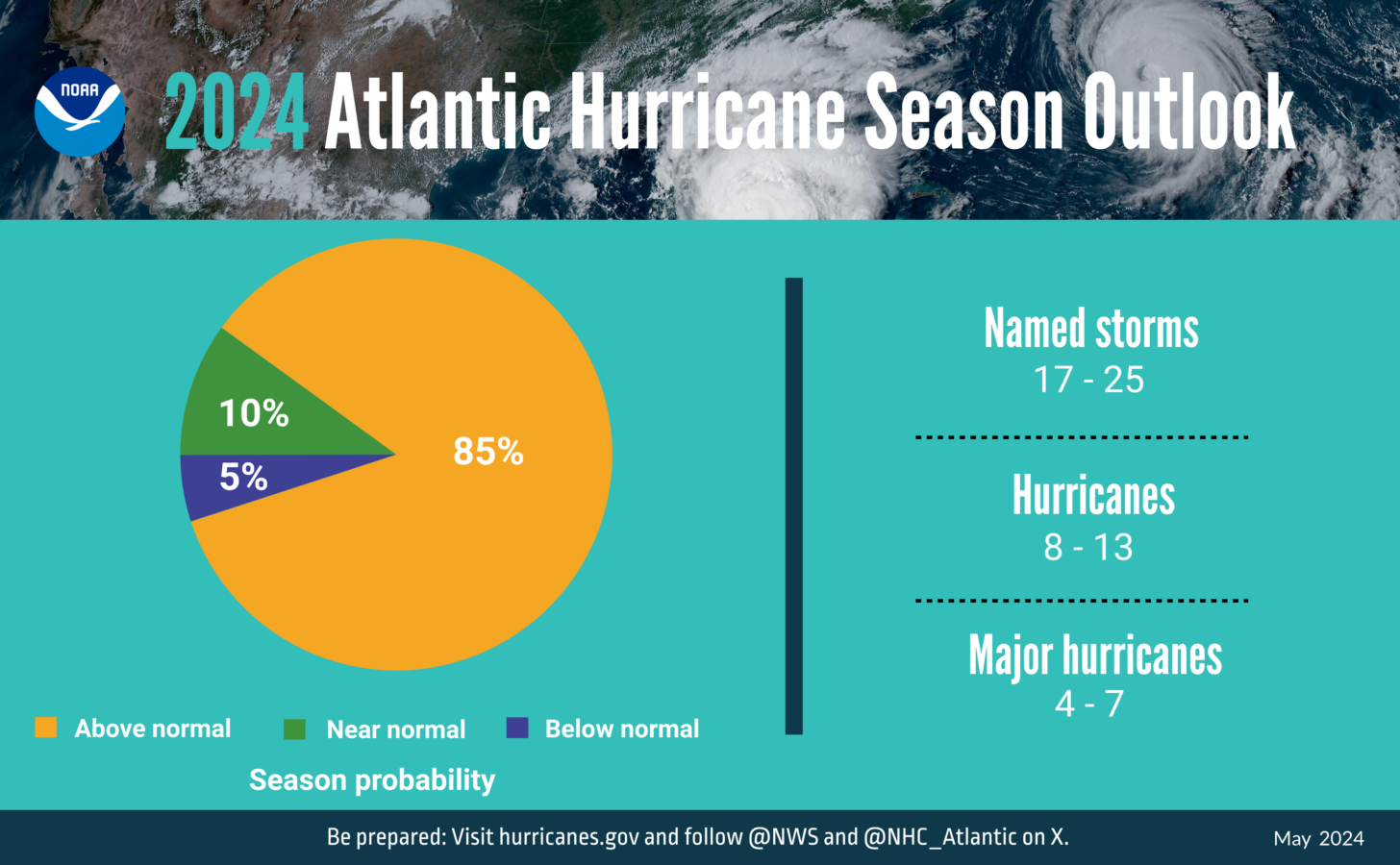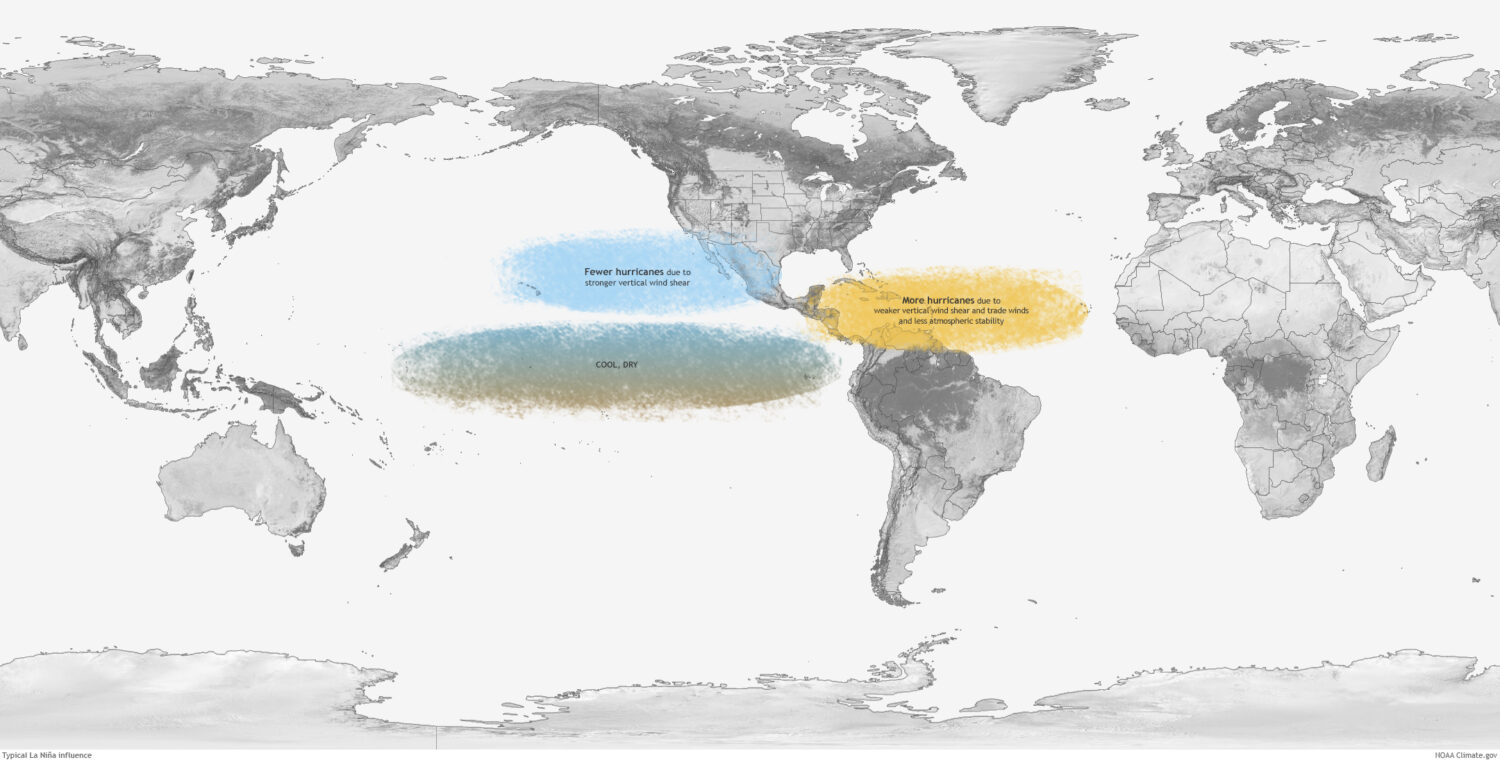Source: https://www.noaa.gov/news-release/noaa-predicts-above-normal-2024-atlantic-hurricane-season
The May 23 outlook from the National Oceanic and Atmospheric Administration (NOAA) forecasts 17 to 25 named storms, eight to 13 of which could become hurricanes.

Four to seven major hurricanes are forecast. This is a concerning outlook, and it can be explained as follows.
The recipe for the 2024 hurricane outlook
Ingredients:
- Record warm sea surface temperature (SST) for most of the Atlantic (currently 1-2 degrees Celsius above average, which is more like temperatures seen in August; promotes rapid intensification).
- High Accumulated Cyclone Energy (ACE – second highest after 2010; a high ACE is linked with the most destructive hurricanes).
- La Niña (77% chance of forming in late summer-early fall; La Niña is linked to reduced wind shear. High wind shear breaks down cyclone formation, especially in the Western Gulf of Mexico and Caribbean).

NOAA https://www.climate.gov/media/13556
Instructions:
Put everything together leading up to May, test for possible results.
Results:
- A likelihood of higher-than-normal level of activity (record warm SST contributes to the high end of the forecast; the longer the ocean is super warm, the longer and stronger the season is likely to be).
- Potential for rapid intensification of storms when approaching land (in less than 24h, brings intense rainfall and challenges for preparedness; most if not all Category 5 hurricanes in the last few years intensified rapidly).
Serious potential consequences, need for increased preparedness
This is the highest ever May hurricane outlook issued by NOAA. But that is not what we should focus on, because we know it only takes one landfall to bring disaster.
We must be ready. US coastal communities are tired of crossing their fingers and hoping these storms of epic, record-breaking proportions veer away from their homes, dissipate, or spin out over the Atlantic.
It’s imperative that local, state, and federal policymakers and emergency planners help keep communities safe by prioritizing investments to get homes, businesses, and infrastructure in frontline communities climate-ready and be prepared to ensure a quick and just recovery should disaster strike. Reining in heat-trapping emissions driving the climate crisis is also essential.
If we act on climate, we may be able to substitute some of the ingredients in the outlook recipe, and come out with better results in future tries. And who doesn’t like a good recipe substitution?

